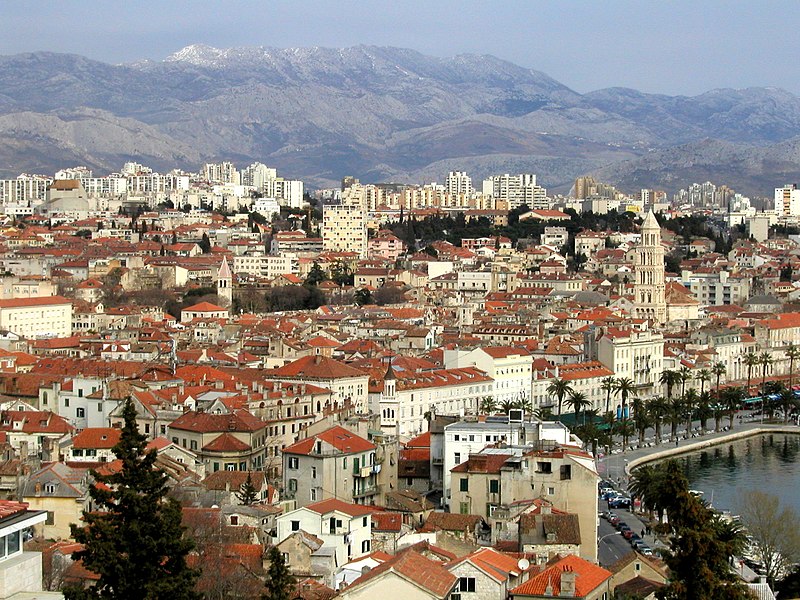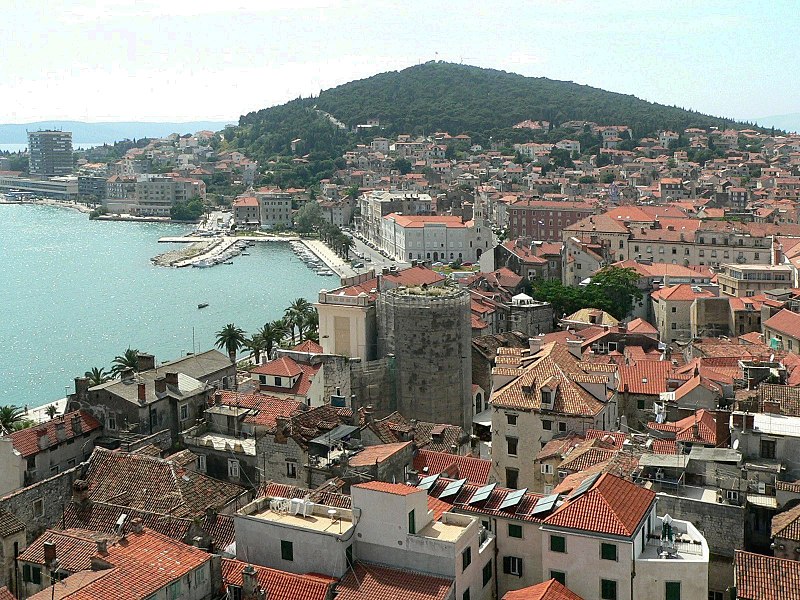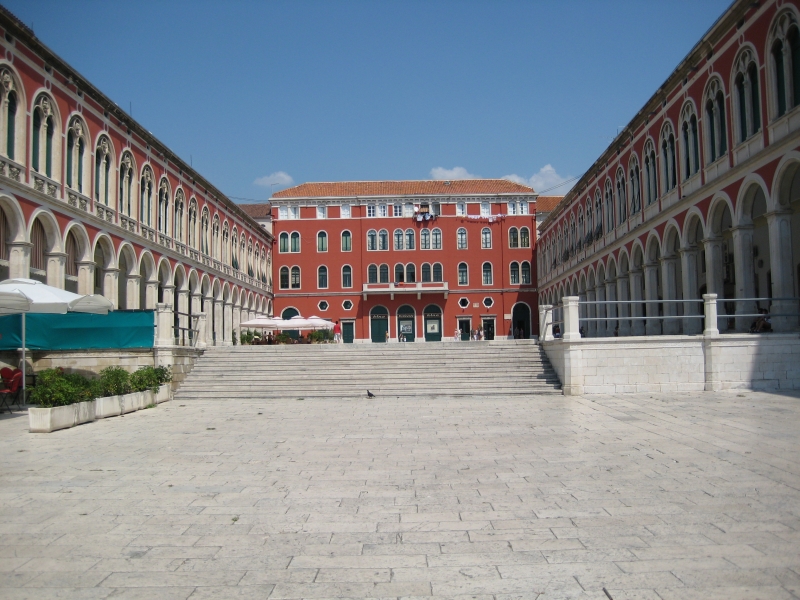Wir verbringen in diesem Jahr erstmals unseren Urlaub in Split, Skrolan3 und ich haben bisher schon Istrien, die Kvarner Bucht, Zadar und Dubrovnic besucht, Herr und Frau Saarbock sind noch unwissend.
Ausserdem machen wir erstmals gemeinsam Urlaub, also Abenteuer pur! Und was macht ein Geocacher, wenn er irgendwo hin kommt: ein Event!
Ove godine prvi put provodimo svoj odmor u Splitu, Skrolan3 i ja smo već posjetili Istru, Kvarnerski zaljev, Zadar i Dubrovnik, gospodin i gospođa Saarbock još uvijek ne znaju.
Uz to, prvi put zajedno idemo na odmor, dakle čista avantura! A što radi geocacher kad negdje ode: događaj!
This year for the first time we spend our holidays in Split, Skrolan3 and I have already visited Istria, the Kvarner Bay, Zadar and Dubrovnic, Mr and Mrs Saarbock are still ignorant.
Besides, for the first time we are on holiday together, pure adventure! And what does a geocacher do when he comes somewhere: an event!
Deshalb laden wir alle Interessierten ein, uns am
Stoga pozivamo sve zainteresirane, nas na
Therefore, we invite all interested parties, to visit us on |
Samstag,
Subota,
Saturday, |
12.10.2019
|
um
u
at |
17:00 h
|
an den oben angegebenen Koordinaten zu besuchen.
na gore navedenim koordinatama.
at the above coordinates. |
Wir werden bis 18:00 Uhr vor Ort sein, dann endet unser kleines Event.
Bit ćemo tamo do 18 sati, a onda će se naš mali događaj okončati.
We will be there until 18:00, then our little event will end. |
Prevedeno na hrvatskom jeziku: IM Translator
Translated to English with: Deepl
nach oben


Split ist die zweitgrößte Stadt Kroatiens. Sie ist die größte Stadt Südkroatiens und gilt daher im Volksmund als „Hauptstadt Dalmatiens“, ohne dass ihr dieser Status je offiziell zugesprochen wurde. Die Stadt ist Verwaltungssitz der Gespanschaft Split-Dalmatien, die den zentralen Teil Dalmatiens umfasst. Split zählte 2011 etwa 167.000 Einwohner.
Split ist eine bedeutende Hafenstadt und Sitz der katholischen Erzdiözese Split-Makarska. In Split befindet sich zudem eine Universität. Die Ursprünge der Stadt sind auf den Diokletianspalast zurückzuführen. Die Innenstadt von Split mitsamt dem Diokletianspalast wurde 1979 von der UNESCO zum Weltkulturerbe erklärt.
Die Stadt hat im Verlauf der Geschichte mehrere Male eine Namensänderung erfahren. So stößt man auf Aspalathos/Spalatos (gr.), Spalatum, Spalato (italienisch), Spljet, Split. Es gibt verschiedene Etymologien zu dem Wort. Eine geht davon aus, der Name der Stadt stamme von der Pflanze Stacheliger Dornginster ab. Andere besagen, der Name sei eine Ableitung vom lateinischen Wort für "Palast". Eine weitere Theorie geht von dem Wort Spalatum aus, dem früheren kulturellen Knotenpunkt der Einwohner Dalmatiens. Die Stadt Solin, wahrscheinlich die Heimatstadt von Kaiser Diocletian, wurde jedoch beim Awarensturm zerstört und verlor ihre Bedeutung an die benachbarte Stadt Split.
Die Altstadt von Split wurde zum Weltkulturerbe der UNESCO erklärt. Sie liegt an der Südküste der Halbinsel von Split und wird gebildet vom alten Diokletianpalast, aus dem sich die Stadt entwickelt hat, und der westlich davon anschließenden mittelalterlichen Stadterweiterung.
Direkt am Meer längs der Hafenbucht an der Altstadt liegt die Riva, eine Flaniermeile, die wohl das bekannteste Wahrzeichen der Stadt ist. Von der Riva gelangt man durch die Kellergewölbe (Podrumi) zum beeindruckenden Säulenhof Peristyl und zum Vestibül. In der Altstadt liegt die Kathedrale des hl. Domnius von Split (Katedrala Sveti Duje). Sie diente bis ins 6. Jahrhundert als Mausoleum des Kaisers Diokletian und seiner 315 verstorbenen Gattin Prisca. Vom Campanile der Kathedrale hat man einen guten Blick über die Stadt.
Sehenswürdigkeiten und Baudenkmäler


Split je drugi najveći grad u Hrvatskoj. Najveći je grad na jugu Hrvatske i zbog toga je popularno poznat kao 'glavni grad Dalmacije', a ovaj status nikada nije službeno dodijeljen. Grad je administrativno sjedište Splitsko-dalmatinske županije koja obuhvaća središnji dio Dalmacije. Split je u 2011. brojio oko 167.000 stanovnika.
Split je glavni lučki grad i sjedište Splitsko-makarske nadbiskupije. U Splitu postoji i sveučilište. Podrijetlo grada može se pratiti do Dioklecijanove palače. Grad Split, uključujući Dioklecijanovu palaču, UNESCO je 1979. godine proglasio svjetskom baštinom.
Grad je tijekom povijesti nekoliko puta mijenjao ime. Tako se susreću Aspalathos / Spalatos (gr.), Spalatum, Spalato (talijanski), Spljet, Split. Riječ ima različite etimologije. Jedan pretpostavlja da ime grada dolazi od biljke bodljikave trnjake. Drugi kažu da je ime izvedenica latinske riječi za 'palača'. Druga se teorija temelji na riječi Spalatum, nekadašnjem kulturnom središtu stanovnika Dalmacije. Grad Solin, vjerojatno rodni grad cara Dioklecijana, uništio je oluju Aventor i izgubio na važnosti za susjedni grad Split.
UNESCO je stari grad Splita proglasio svjetskom baštinom. Nalazi se na južnoj obali splitskog poluotoka, a tvori ga stara Dioklecijanova palača, iz koje se grad razvio, i srednjovjekovni gradski nastavak koji ga pridružuje zapadu.
Neposredno na moru duž lučke uvale u starom gradu nalazi se Riva, šetnica, koja je vjerojatno najpoznatija znamenitost grada. S Rive, kroz podrumske svodove (Podrumi) dolazite do impresivnog peristila i predsoblja. U starom gradu nalazi se Katedrala sv. Domus Split (Katedrala Sveti Duje). Služio je do 6. stoljeća kao mauzolej cara Dioklecijana i njegove 315 preminule supruge Priske. Iz kampanije katedrale imate dobar pogled na grad.
Znamenitosti i spomenici.
Napisano u: Wikipedia.de
Prevedeno na hrvatskom jeziku: IM Translator
nach oben


Split is the second largest city in Croatia. It is the largest city in southern Croatia and is therefore popularly known as the "capital of Dalmatia", without ever having been officially granted this status. The city is the administrative seat of the Split-Dalmatia County, which comprises the central part of Dalmatia. Split had about 167,000 inhabitants in 2011.
Split is an important port city and seat of the Catholic archdiocese Split-Makarska. There is also a university in Split. The city's origins can be traced back to the Diocletian's Palace. The city centre of Split together with the Diocletian's Palace was declared a World Heritage Site by UNESCO in 1979.
The city has changed its name several times in the course of history. Thus one comes across Aspalathos/Spalatos (gr.), Spalatum, Spalato (Italian), Spljet, Split. There are different etymologies to the word. One assumes that the name of the city derives from the plant thorny broom. Others say that the name is derived from the Latin word for "palace". Another theory is based on the word spalatum, the former cultural hub of the inhabitants of Dalmatia. The town of Solin, probably the hometown of Emperor Diocletian, was destroyed during the Avars Tower and lost its importance to the neighbouring town of Split.
The Old Town of Split has been declared a UNESCO World Heritage Site. It lies on the southern coast of the Split peninsula and is formed by the old Diocletian's Palace, from which the city developed, and the medieval expansion of the city to the west.
Directly at the sea along the harbour bay at the old town lies the Riva, a promenade, which is probably the most famous landmark of the city. From the Riva, through the cellar vault (Podrumi), you reach the impressive Peristyl columned courtyard and the vestibule. The cathedral of St. Domnius of Split (Katedrala Sveti Duje) is located in the old town. Until the 6th century it served as a mausoleum for the emperor Diocletian and his 315 deceased wife Prisca. From the Campanile of the cathedral you have a good view over the city.
Sights and monuments.
Written off at: Wikipedia.de
Translated to English with: Deepl.com
nach oben
| Ich nehme teil - Ja sudjelujem - I will attend |
| Name |
Anzahl |
| HyppoderEinzige |
1 |
| skrolan3 |
1 |
| saarbock |
2 |
| harmony50c |
2 |
| biffsjef |
3 |
| |
|
|
|
|
|
|
|
|
|
|
|
|
|
| Gesamt |
9 |